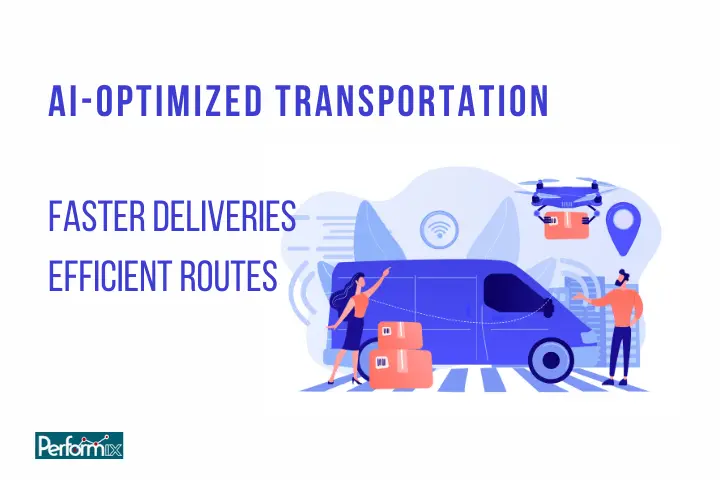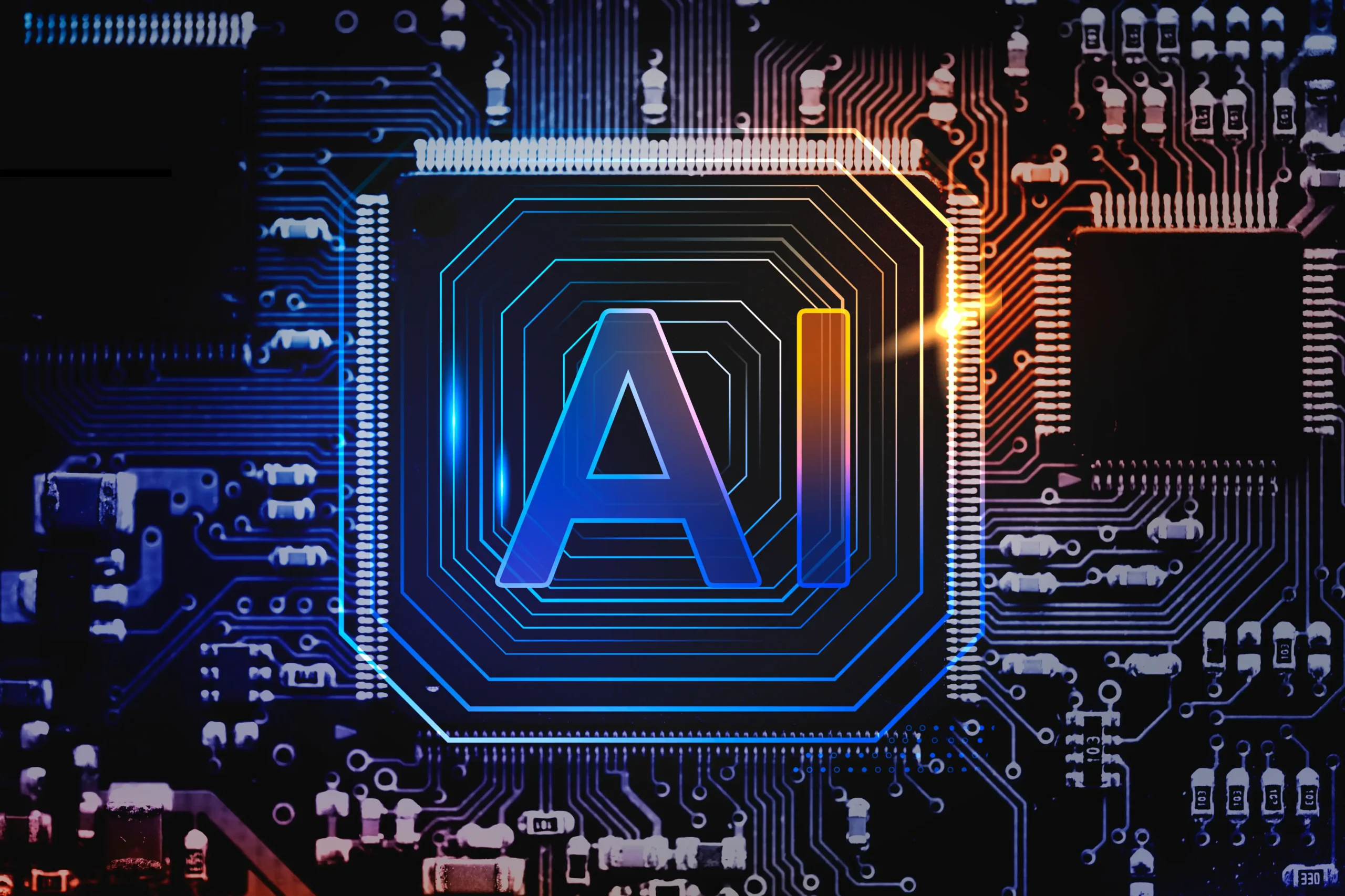Artificial intelligence (AI) has undergone widespread transformation across many industries, and the transportation sector is no exception. AI-optimized transportation has the potential to revolutionize the way we move goods and people, making deliveries faster and routes more efficient. This article will explore how AI is used in transportation, its benefits, and its challenges.
AI in Transportation: An Overview
Artificial intelligence (AI) emulates human intellect in computers programmed to execute activities that traditionally require human intelligence. These tasks include visual perception, speech recognition, decision-making, and language translation.
Do you know
In 2021, the worldwide market for artificial intelligence (AI) in transportation was valued at USD 2.3 billion. By 2030, this figure will soar to approximately USD 14.79 billion.
Benefits of AI-Optimized Transportation
The use of AI in transportation offers several benefits, including:
1. Route Optimization
Opting for AI-driven route optimization solutions is a smart investment for companies seeking to streamline transportation operations and achieve operational efficiencies. Leveraging AI algorithms can significantly improve route optimization by analyzing big data and identifying new, more efficient routes. By applying AI transportation algorithms, businesses can discover previously undiscovered ways, resulting in significant cost savings, improved time efficiency, and fuel efficiency. This approach can help companies to remain competitive while increasing their profitability.
2. Operational Cost Reduction
With AI-powered route optimization, businesses can reduce the number of vehicles required for deliveries, significantly saving salaries, maintenance, marketing, and production costs. Depending on the company’s nature, other fees may also be reduced. While some costs cannot be lowered by AI, such as indirect fees, automation of tasks can result in savings by replacing workers with machines. Moreover, AI tools can speed up repairs and simplify maintenance processes.
3. Predictive Fleet Maintenance (PFM)
By analyzing historical data, PFM can predict and identify potential vehicle issues before they occur, enabling preemptive maintenance instead of reactive maintenance. PFM utilizes sophisticated algorithms to analyze multiple factors and prioritize vehicles based on their repair needs. Businesses can make informed, data-driven decisions to improve fleet performance and reduce maintenance costs by collecting data on recurring issues, particularly those related to engineering problems.
4. Inventory Management
Integrating warehouse robots with AI algorithms enables efficient and error-free completion of routine tasks. With AI analyzing consumer behavior, warehouse stocks can be optimized, significantly reducing maintenance and renting costs.
The predictive capabilities of AI in transportation enable both short-term and long-term inventory management. In the short term, AI can compare supply and demand to ensure that only essential items are stored. At the same time, long-term forecasts can identify seasonal trends and needs, optimizing inventory for maximum efficiency.
5. Traffic Safety and Accidents
Safety concerns for drivers and pedestrians are warranted due to the poor infrastructure in many nations, especially low-income countries. Inadequate infrastructure and cars built to pre-1980s safety regulations provide a serious risk, with human error playing a major role in the situation. Safer transportation in developing nations may be achieved via artificial intelligence.
One of the major advantages of AI in transportation is that researchers believe autonomous cars might avert dangerous situations on the roads, potentially saving thousands of lives.
6. Vehicle Tracking
Logistics firms may constantly contact one another by installing IoT sensors in each vehicle. Your delivery is safer since you can monitor the vehicle’s position, speed, and direction in real-time. The convenience of having all of your data saved in the cloud means it can be accessed from any device at any time.
7. Workforce Management
Artificial intelligence in transportation significantly impacts human resource management, particularly in the hiring and staffing phases of operations. AI-powered tools may be used for onboarding, monitoring, evaluating personnel, and assigning work based on individual talents.

8. Sustainability and Eco-friendly practices
The term “sustainability” has become increasingly popular in the corporate lexicon. Climate change has challenged our lifestyles, but AI-driven technology can provide fresh approaches to old challenges. Carbon emissions are decreased, and energy is saved as a consequence. Engineers can find new, environmentally friendly ways to power automobiles with the help of AI technologies in the transportation sector.
9. Space optimization
Space efficiency calculations are relatively easy due to the many possible outcomes—transportation and shipping AI technology step in to do the math for you here. Companies can foresee the most efficient usage of capacity along the route if they can gather and analyze massive volumes of data. You may save money by reducing the number of cars needed.
Challenges of AI-Optimized Transportation
Despite the potential benefits, several challenges must be overcome to realize the potential of AI-optimized transportation fully. These challenges include:
- Regulation: The development and deployment of autonomous vehicles are subject to regulation by government agencies, which can take time and effort. There are also concerns about safety and liability that need to be addressed.
- Data Quality and Privacy: Artificial intelligence systems use massive data to make decisions, but the data quality might vary widely. Concerns have been raised concerning privacy and security, especially regarding acquiring and using personally identifiable information.
- Ethical Considerations: Data used to train AI systems can only make them so unbiased. Some worry that AI will reinforce existing prejudices, especially those based on race, gender, and socioeconomic class.
- Workforce Displacement: Adopting AI-optimized transportation can displace workers, particularly in industries such as trucking and delivery.
Real-World Examples of AI-Optimized Transportation
Many of the world’s leading transportation companies have adopted AI and are operating successfully. These businesses have incorporated AI technologies to optimize logistics operations, reduce delivery times, enhance safety, and reduce expenses. Among the most notable examples of transportation companies that have adopted AI are:
- Amazon: The world’s largest online retailer uses AI-powered delivery drones and autonomous vehicles to reduce shipping costs and shorten delivery periods.
- Waymo: Waymo is a subsidiary of Alphabet Inc. that develops self-driving cars. The company has been testing its autonomous vehicles in several cities in the US, including Phoenix, Arizona, and San Francisco, California.
- UPS: UPS uses AI algorithms to optimize delivery routes and reduce fuel consumption. The company has also been testing drones for deliveries in rural areas.
- Tesla: Tesla’s electric vehicles are equipped with a suite of AI technologies, including computer vision and machine learning, which enable features such as autonomous driving and predictive maintenance.
- DHL: DHL uses AI algorithms to optimize its logistics operations, including route planning and warehouse management. The company is also testing autonomous delivery vehicles and drones.
- Uber: Uber has been testing self-driving cars in several cities, including Pittsburgh, Pennsylvania, and San Francisco, California. The company also uses AI algorithms to optimize its ride-sharing service and reduce passenger wait times.

“Exploring IoT with Chris Goh: A Journey into Trends, Use-Cases, and the Future”, an enlightening conversation that promises to expand your horizons in IoT.
A not to miss podcast episode from Performix!
Do you know
North America is expected to maintain its preeminent position on the global market as the adoption of AI technologies in transportation continues to expand. According to industry projections, the North American region is expected to emerge as the dominant vehicle marketplace for AI. With a growing demand for intelligent transportation systems and an increasing focus on enhancing the efficiency and safety of transportation networks, the region is poised for substantial growth in the AI sector. Read in detail
The future of AI in transportation appears promising. Globally, countries are rapidly implementing this technology to make transportation more efficient, safe, and environmentally friendly. With the implementation of AI technology in autonomous vehicles, route optimization algorithms, and predictive maintenance systems, we can anticipate a significant reduction in travel time, transportation costs, and carbon emissions.
In addition, the widespread adoption of AI-powered public transportation systems, such as buses, railroads, and subways, will reduce traffic congestion and make public transportation more appealing to commuters.
The United States, China, and Japan are just a few countries making large financial commitments to the research and development of AI-powered transportation systems. Due to this funding, more businesses will be incentivized to invest in research and development of transportation solutions based on artificial intelligence.






